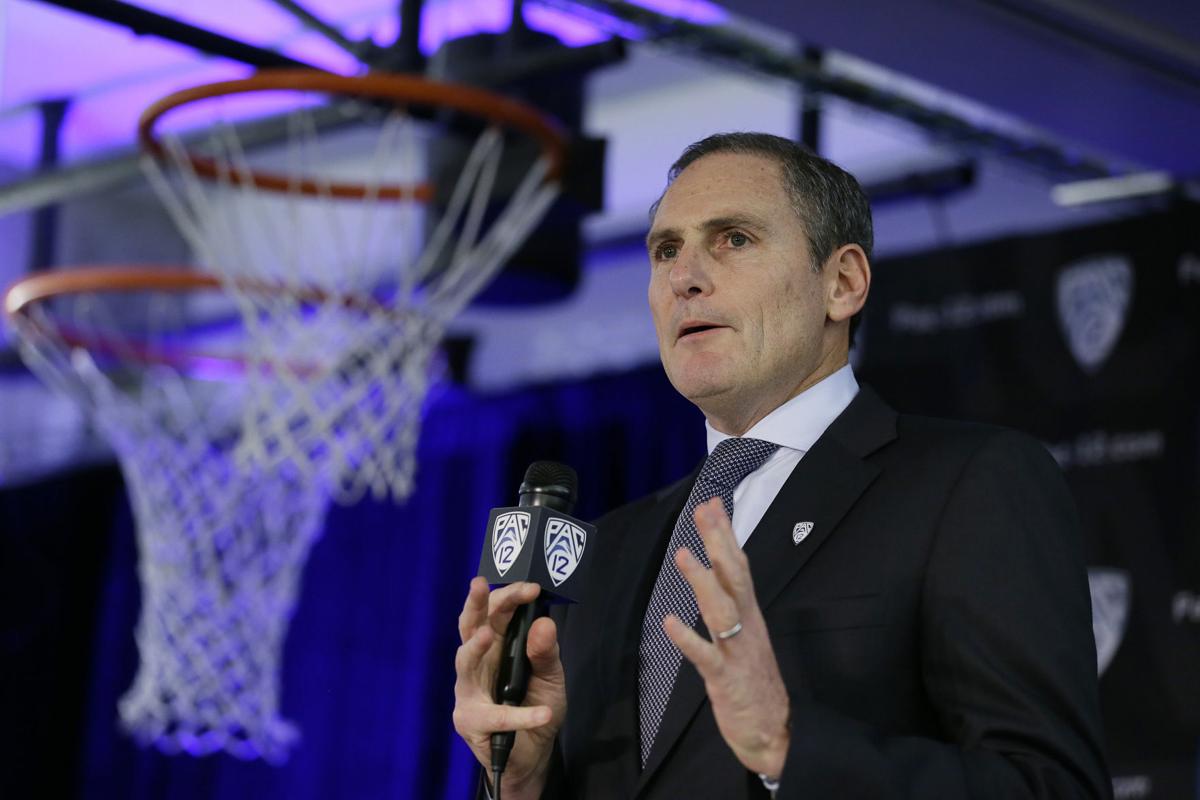After coaching Arizona’s baseball program for 21 years and winning three national championships, Jerry Kindall was awarded a salary of $80,000 in 1993. Arizona baseball coach Jay Johnson is now paid a base salary of $500,000.
Upon coaching Arizona to its first Pac-10 basketball championship in 1986, Lute Olson’s base salary was bumped from $63,000 to $85,000. Reflective of the era, Olson didn’t hire an agent to help him negotiate.
“I would indicate negotiations could be handled in a five-minute time period,” Olson told the Star.
Now UA basketball coach Sean Miller has a base salary of $1.8 million, with compensation almost double that.
After Joan Bonvicini spent 15 years coaching Arizona’s women’s basketball team to national prominence, including a Pac-10 championship, the base salary for her final season, 2008, was $139,000. Now UA women’s basketball coach Adia Barnes has a base salary of $407,000.
Today, in what is sure to become the Great Depression of college athletics, a lot of people are wondering how salaries of college coaches and administrators became so warped in what seems like no time at all.
How did college sports go from a mid ’90s platform of “cost containment” to an era of private jets, paying $250,000 for a search firm to help identify and hire a head coach, and football programs spending between $60,000 to $100,000 a year to stay in local hotels the night before games with round-trip police escorts for their luxury buses?
Many college administrators have long worried that the spend-with-indescretion model was not sustainable. Keeping up with the Joneses? Barber shops in team football facilities? Strength and conditioning coaches being paid $800,000 a year?
It took COVID-19 to deliver the long-predicted train wreck that would re-set the financial resources of almost every college athletic department.
In Olson’s final season at Arizona, assistant coaches Josh Pastner and Miles Simon were paid $120,000 and $90,000, respectively. Last season, UA basketball assistant coaches were paid a cumulative $895,000.
What next?
No Power 5 conference athletic department has eliminated a sport. Not yet, but it’s inevitable and it’s getting closer and closer.
Boise State has now eliminated baseball and women’s swimming. UConn followed by dropping men’s swimming, cross country, tennis and women’s rowing.
This is a beginning, not an end.
On Monday, Pac-12 commissioner Larry Scott actually used the phrase “cost containment” in an email to his executive staff, a memo obtained by the Oregonian newspaper. Scott further said he was taking a 12% pay cut from his salary of $5.3 million through the 2020-21 fiscal year.
Larry Scott is the modern Exhibit A for bloated salaries and irresponsible spending in college athletics, but he is not at the root of the issue that now plagues every athletic department in NCAA Division I. Scott just carried the excessive spending torch to another level when he was hired in 2009.
Getting a perspective on the out-of-control spending is not difficult.
In a disciplinary issue last week, the Utah Utes announced they were reducing the salary of defensive coordinator Morgan Scalley from $1.1 million to $525,000. It has been 22 years — a long time in the college sports world of dollars-and-sense — but after Dick Tomey coached Arizona to a historic 12-1 season in 1998, his contract was rewritten to pay him $500,000 in total compensation.
Now a Utah defensive coordinator has his salary cut in half and still makes more than Tomey at the height of his career.
Arizona last eliminated a sport in the spring of 1985. Until now, it was the most dire financial crisis in modern UA athletic history. Athletic director Cedric Dempsey eliminated women’s synchronized swimming, which had not only won two NCAA championships earlier in the decade, but was coming off a stunning 1984 Olympic performance in which Wildcats Tracie Ruiz and Candy Costie won gold medals.
Seven members of the USA national synchronized swimming team were training on campus at the Hillenbrand Aquatic Center, yet Dempsey was able to save $1.6 million in what years later seems like a work of financial genius.
With a $437,000 athletic deficit, Dempsey saved $1.6 million by eliminating 11 staff positions, reducing the operations budget by $335,000, cutting non-revenue sports by 40 percent and realizing then-significant gains of $23,000 from the department’s medical insurance carrier, $45,000 from Olson’s first appearance in the NCAA Tournament, and even a positive cash flow of $5,000 from baseball ticket sales.
Until the coronavirus pandemic hit, $5,000 was peanuts to a Power 5 athletic department. Now it matters.
A few days after Dempsey announced the UA would save $60,000 by eliminating synchronized swimming travel expenses and coaching salaries, he scheduled a football game at big-money Ohio State, and soon thereafter added then-lucrative home-and-home football series against LSU and Oklahoma.
It worked.
Sure, it was a different time. Dempsey was hired away from Houston in 1982, actually taking a pay cut from about $75,000 to $66,000 at Arizona. But Dempsey had a vision, a career plan and was so effective in dollars-and-sense that he was hired to be the executive director of the NCAA in 1993 partly on a campaign of “cost containment.”
Now, all these years later, the biggest spender in Pac-12 history, Larry Scott, has gone back in history and dusted off Arizona’s cost-containment concept of an earlier era.
The bill has come due.





